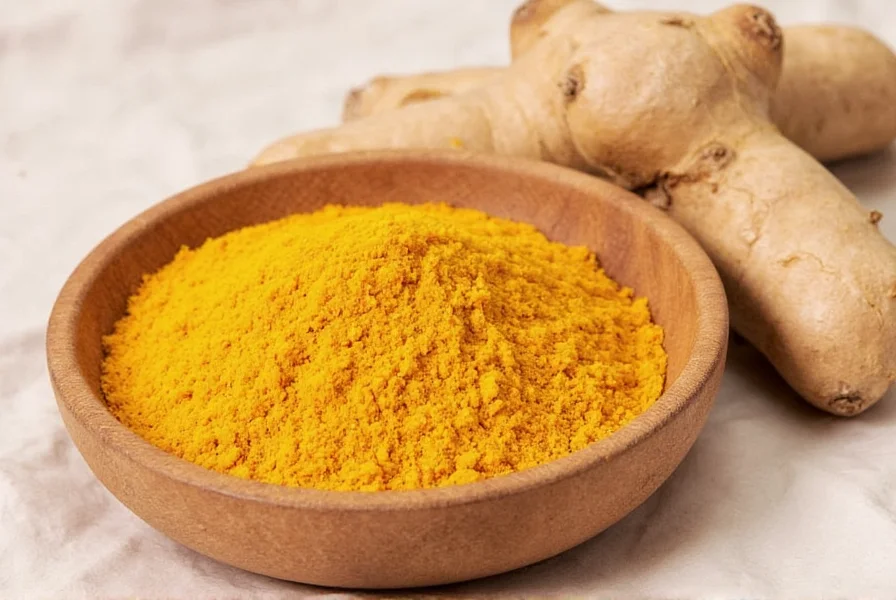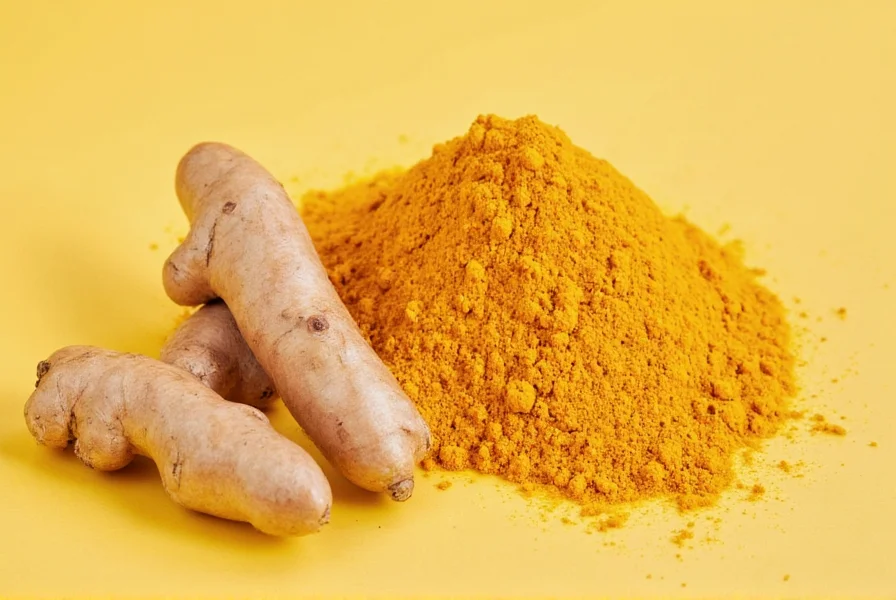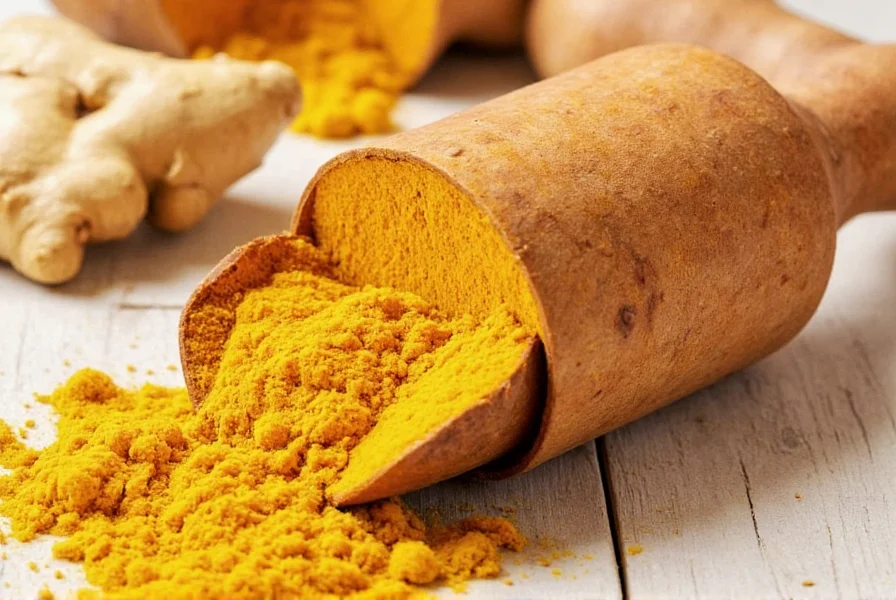When exploring the health benefits of turmeric and ginger, it's important to understand that while these spices share some therapeutic properties, they also have distinct characteristics that make them valuable individually and when used together. Turmeric (Curcuma longa), frequently misspelled as tumeric, contains curcumin as its primary active compound, while ginger (Zingiber officinale) features gingerol as its key bioactive component. Scientific research indicates both spices demonstrate significant anti-inflammatory effects, though they operate through different mechanisms in the body.
Understanding Turmeric and Ginger: Key Differences and Similarities
Despite their similar golden-yellow appearance and shared status as rhizomes (underground stems), turmeric and ginger belong to different plant families and offer unique chemical profiles. Turmeric comes from the Curcuma longa plant in the Zingiberaceae family, while ginger is from the Zingiber officinale plant in the same botanical family.
| Characteristic | Turmeric | Ginger |
|---|---|---|
| Primary Active Compound | Curcumin (2-8% of rhizome) | Gingerol (3-6% of rhizome) |
| Taste Profile | Earthy, slightly bitter, peppery | Pungent, spicy, warming |
| Traditional Use | Ayurvedic medicine for inflammation | Traditional Chinese medicine for nausea |
| Absorption Challenge | Low bioavailability without fat or piperine | Good bioavailability |
Scientific Evidence Behind Health Benefits
Modern research has increasingly validated many traditional uses of these spices. A comprehensive review published in Nutrients (2021) analyzed over 50 clinical trials examining curcumin's effects, finding consistent evidence for turmeric's role in reducing markers of inflammation, particularly in osteoarthritis management. The study noted that standardized curcumin extracts (typically 500-1500mg daily) demonstrated significant improvements in joint pain and function compared to placebo.
Similarly, ginger research shows impressive results for specific conditions. A meta-analysis in the American Journal of Preventive Medicine (2022) concluded that ginger supplementation (1-1.5g daily) significantly reduced nausea severity in pregnancy and chemotherapy-induced nausea. The analysis included data from 12 randomized controlled trials with over 1,200 participants.

How Turmeric and Ginger Work Together
When combined, turmeric and ginger create what researchers call a "synergistic effect"—where the combined impact exceeds the sum of their individual effects. This synergy appears particularly strong for digestive health and inflammation reduction. A 2023 study in Phytotherapy Research demonstrated that a combination formula containing both curcumin and gingerol reduced inflammatory markers 37% more effectively than either compound alone in patients with metabolic syndrome.
The complementary mechanisms explain this synergy:
- Turmeric primarily inhibits the NF-kB pathway, a key regulator of inflammation
- Ginger works through multiple pathways including COX-2 inhibition and antioxidant activity
- Together they provide broader anti-inflammatory coverage
Practical Applications and Daily Use
Incorporating these spices into your daily routine requires understanding proper preparation methods to maximize benefits. For turmeric, the key challenge is its notoriously low bioavailability. Research shows that consuming turmeric with black pepper (which contains piperine) can increase curcumin absorption by up to 2,000%. Similarly, combining turmeric with healthy fats like coconut oil or olive oil enhances absorption due to curcumin's fat-soluble nature.
Here are evidence-based recommendations for daily use:
- Turmeric: 500-2,000mg of standardized curcumin extract, or 1-3g of powdered turmeric with black pepper and fat
- Ginger: 1-1.5g of fresh ginger, or 250-500mg of standardized ginger extract
- Combination: Golden milk (turmeric-ginger tea) made with 1 tsp turmeric, 1/2 tsp ginger, black pepper, and coconut milk

Safety Considerations and Potential Interactions
While generally safe when consumed as food ingredients, therapeutic doses of turmeric and ginger require caution in certain populations. Turmeric may interact with blood thinners like warfarin due to its mild anticoagulant properties. The European Medicines Agency notes that curcumin supplements should be avoided by individuals with gallstones or bile duct obstruction.
Ginger is generally well-tolerated but may cause mild heartburn or mouth irritation in some people. Those taking diabetes medications should monitor blood sugar closely when using therapeutic ginger doses, as it may enhance medication effects. Pregnant women should limit ginger to culinary amounts (under 1g daily) during the first trimester without medical supervision.
Evidence-Based Recommendations for Specific Conditions
Research suggests targeted approaches for different health concerns:
- Joint pain: 500mg curcumin twice daily with meals plus 250mg ginger extract
- Digestive issues: 1g fresh ginger before meals plus 250mg curcumin with food
- Immune support: Daily golden milk with 1 tsp turmeric, 1/2 tsp ginger, and black pepper
- Post-exercise recovery: 1g ginger extract plus 500mg curcumin within 30 minutes of exercise
It's crucial to note that while these spices offer significant health benefits, they should complement—not replace—conventional medical treatments for serious conditions. The strongest evidence supports their use as complementary approaches rather than standalone treatments.
Conclusion: Maximizing Benefits While Managing Expectations
Turmeric and ginger represent two of nature's most well-researched medicinal spices. Their anti-inflammatory and antioxidant properties have substantial scientific backing, though the quality of evidence varies by specific health claim. When incorporating these spices into your wellness routine, focus on consistent, moderate consumption through food first, with supplements used strategically for specific concerns under professional guidance. Understanding their distinct mechanisms and synergistic potential allows for more targeted and effective use.











 浙公网安备
33010002000092号
浙公网安备
33010002000092号 浙B2-20120091-4
浙B2-20120091-4